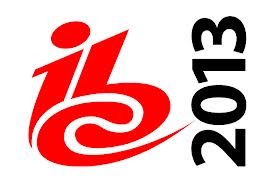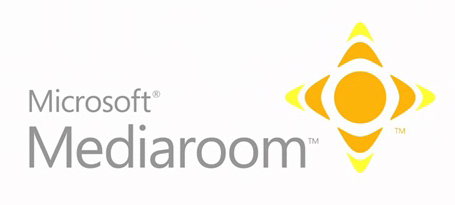Tomorrow I’m speaking at the Future TV conference in Copenhagen (if you speak Danish take a look here).
My presentation is about standards in the age of the connected TV, and here’s what I’ll be saying.
I’ll start by stressing the fact that issues are fundamentally different for:
- Channels,
- TV platforms,
- CE vendors,
- Telcos,
- OTT players
In setting the scene I be wondering what the jury on the lean-back lean-forward debate will decide. It seems that globally, no unique view on what the connected TV is prevailing yet.
Mixing TV & Web has been a hot topic for over 15 years, so why all the fuss now?
Firstly devices in people’s homes have comparable power and screen size to a PC. Secondly, the mobile Internet actually works, at last. Finally broadband has become a commodity.
But there are still some clouds the horizon. There is a possibility that you can’t watch what you want because you have the wrong TV set! This would be the case if Sony were to do a deal with one OTT catch up TV supplier and Samsung use a different one. Another ominous sign on the horizon are the broadband caps being (re)introduced in the US. Such capping could still thwart OTT in its infancy if the movie industry gets its act together faster and better than the music industry did.
Leaving future gazing aside for a moment, the market has already telling us quite a lot. For example, compulsory standards rarely work, at least they haven’t in this space as the EBU’s attempt at enforcing MHP showed.
Standards efforts in the connected TV space have come from different stakeholders. Broadcasters have only really wanted a TeleText 2.0 for now, 40 years after V1.0. Then there’s the CE industry that has totally failed so far, by delivering a connected TV jungle and device-centric standards which are sound, even good (e.g. DLNA), but that still need a lot of work before they can be used to implement usable services. Standards bodies close the scene.
Indeed the usual suspects such as ITU-T or EBU are taking standards based approach and have, as previously stated, staunchly supported MHP (only deployed in Italy and on some Bluray players). Ad-hoc groups like the OIPF (whose work is based on W3C, DBV etc.) also include HbbTV (which is now an ETSI standard deployed in only France, Germany & UK for Freesat), YouView is (for now) the standard for the rest of the UK.
But a product-based approach could standardize the marriage of TV and the Web. The big names from the Web include Apple, Google TV and Yahoo! Widgets. Some operators are bringing out their own products like Cubovision from Italy’s Telecom Italia. Then from the TV solution providers there are a endless hopefuls from the big NDS or Nagra, through the Set makers like Samsung or Sony to device and solution makers like TiVO or even Netgem.
Some standard issues I will cover include the overwhelming of standardization processes. Standardization efforts take time as consensus is needed; yet the market is moving faster & faster… Within good old-fashioned IPTV standards there already is a clear geographic split with ATIS standardizing IPTV in the US while OIPF is doing the same elsewhere and NTT is doing it’s own thing in Japan.
There are even some double standards with a disconnect between actions and intentions. A “Land-grab” is underway with UI & content used to differentiate connected TV services. Standards make differentiation harder and most are pushing them under the carpet for now. The OIPF for example has many CPE vendors as members, but they are not mandating the specifications within their own technology yet. Even Telco’s don’t seem to push that hard to live out their commitments. So far, only broadcasters are playing the standards game by the book.
The Open IPTV Forum or OIPF defines services that use managed as well as unmanaged network delivery. As broadcasters are only interested in unmanaged delivery for now (i.e. OTT), HbbTV only uses part of OIPF. As there is a lot of overlap at the technical level, in ideal world, YouView could use HbbTV as an underlying standard. In the end this will happen anyhow, not because the ideal world will be reached, but because one of the two standards will die and the other will take it over.
In my talk I’ll also focus on what the EBU has been saying recently on Hybrid standards. In London during the Connected TV Summit this month, they noted that content consumption is changing with off-line usage, the diversity of devices and delinearization. Of course business models still rely on content, which must explain the still rising viewing figures for linear TV in many Europe countries. EBU say that broadcasters don’t innovate, lack global approach and still “control” the TV set in the home. EBU further note that CE vendors are already in the market because of falling margins and Improved connectivity that have together created the ideal opportunity. However they have global solutions that don’t always fit the varying markets and are not at all interoperable.
Zooming in on YouView, I’ll remind the audience of its design goals which were to:
- align with industry trends,
- run on silicon products that are available in the market now,
- use open source software where appropriate,
- provide suitable APIs to abstract from underlying software implementation,
- and allow manufacturers to differentiate their products.
Then what about HbbTV?
Well it defines itself as a minimum requirement for a business neutral technology platform and an boasts being an available ETSI standard for hybrid entertainment services, based on other standards from OIPF, CEA, DVB and W3C.
Its 3-fold objective is to simplify the implementation in devices, leave room for differentiation and limit the investment for CE manufacturers. Hmm sounds a bit familiar.
HbbTV is still very young and there are already clamors for some key features to be included in future versions. Adaptive streaming, widgets, second screen support, DRM frameworks and push-VOD via broadcast are just some such examples.
I’m not sure how the future will come about, but I will suggest that we are waiting for our “iPod moment” in the connected TV standards space.
Will it be design driven like the iPod itself by design and tight control to bring true usability? Will it come form a business model innovation like the iPhone that added Apps to an already great user experience? Or will users decide on what the next big thing is on their own, like they did with the barbaric user experience of the SMS that answered a true need.
Wrapping up I’ll note that current standards focus on CE vendors or broadcaster issues, not on users.
The broadcast industry is still trying to control subscribers with standards; at best this can be moderately successful. The CE industry has not got its act together at all with a jungle of competing connected TV environments. The promise is too big for any of them to turn back just yet.
So if the time is indeed ripe for an “iPod moment” determined by the end user, will it be Apple’s whose interest is the TV remains a bit opaque? Or maybe another it could be another Internet big-gun like Google or Microsoft?
My bet would rather be on Netflix. If they steer clear of the torpedoes currently being launched at them from several directions, they could follow in Google’s tracks. Netflix could move from a best-in-class service to deploying an underlying technology (like Google did with Android). Connecting the TV and the Web is not an objective in its own right, but inventing lean-back V2.0 (or veg 2.0 as Anthony Rose put’s it) is. Content recommendation & navigation has to be part of the solution, so if Netflix isn’t the one, it’ll be someone else with outstanding content navigation that will deliver they connected TV’s “iPod moment”.


